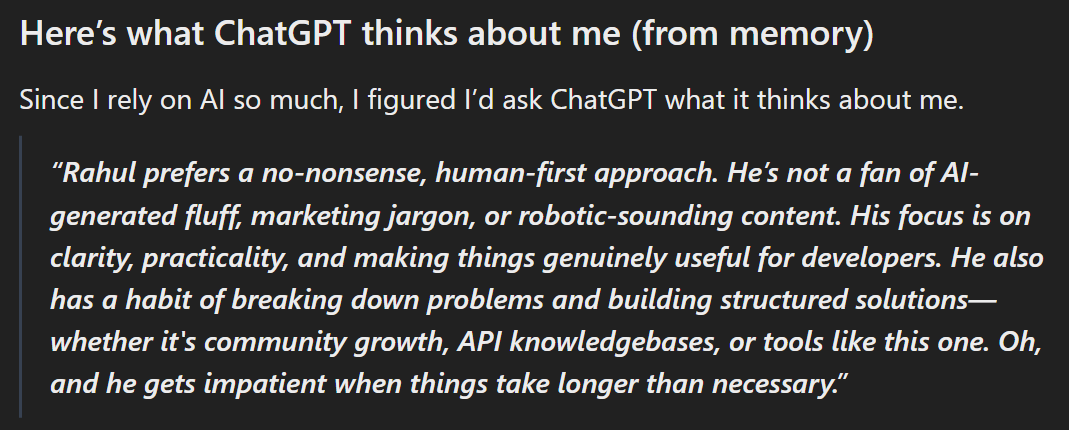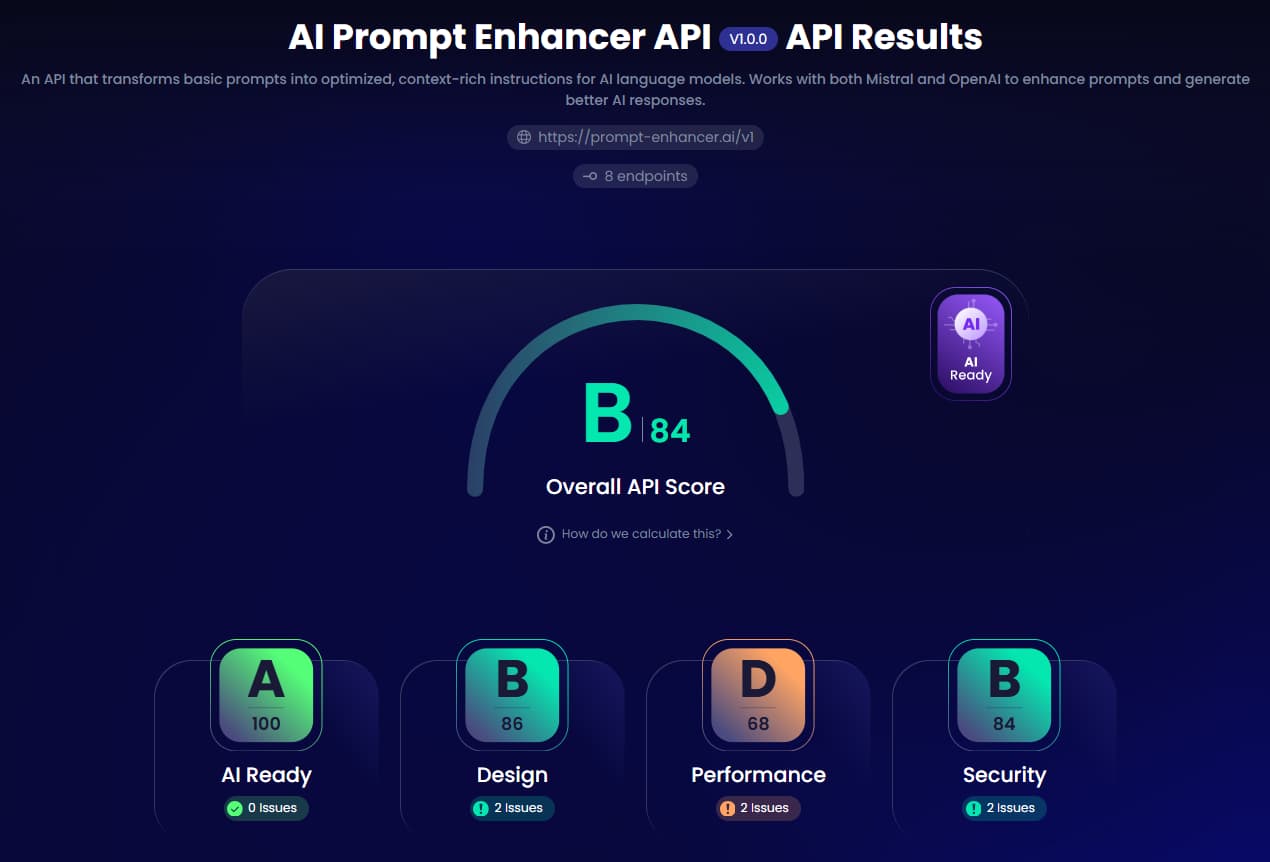AI | Apr 11, 2025 | 5 min read | By Rahul Khinchi

Rahul Khinchi is a Developer Advocate at Treblle, where he focuses on improving API workflows and developer experience. He writes technical content on API observability, security, and governance, and builds open-source tools to demonstrate real-world API use cases. Rahul has spoken at developer meetups and universities, and previously held developer advocacy roles at Syncloop. He was selected for Google Summer of Code in 2022 and has led community initiatives supporting thousands of beginners in open source.
I didn't set out to build another AI tool. I just wanted to stop wasting my time.
While updating the documentation, I kept losing half an hour every time I needed to explain authentication flows or error handling - not writing the actual content but tweaking prompts to get something usable from ChatGPT.
A simple request like Write about API security best practices would return a generic, surface-level answer, so I'd add more details. Still, it was too vague. I'd adjust the tone, request examples, and restructure the instructions until finally, after multiple iterations, I got something useful.
This cycle repeated every time I needed AI-generated content. Before I knew it, I spent more time refining prompts than focusing on development work.

Can't argue with that. That's when I decided to solve the problem once and for all.
AI models are skillful, but they're not mind readers. The results can be wildly off-target if your prompt isn't clear or detailed.
The real issue is miscommunication. When we talk to each other, we fill in gaps with context and shared understanding. AI models? Not so much.
Think about asking someone to "write a short email." They'd naturally know who it's for, what it's about, and what tone to use. An AI needs all of that spelled out.
This miscommunication leads to:
Prompt Enhancer AI transforms your rough ideas into clear, structured instructions that AI models understand better, eliminating the frustration of prompt iteration.
Trying the tool is straightforward:
That's it. No signup, no fees.
I built the AI Prompt Enhancer | API Insights | Powered by @treblle
The content I got back wasn't perfect, but it was way better than what I'd get from the original prompt. And now, I just tweaked a few details instead of deleting half the response and completely restructuring it.
Complete documentation is available in the repository for developers wanting to integrate the API directly.
Prompt Enhancer AI proves valuable across various scenarios:
I built AI Prompt Enhancer with flexibility and security in mind:
I integrated API Insights for governance checks against industry best practices during development. The tool ran 30+ automated tests on my OpenAPI specification and identified several critical improvements:

The complete API Insights Report is available at AI Prompt Enhancer API V1.0.0.
For runtime visibility, I implemented Treblle to capture the 50+ metadata points per request for proper debugging. This approach provided endpoint detection, request/response monitoring, and error tracking without custom instrumentation.
The platform automatically generated OpenAPI documentation from actual request patterns, eliminating the documentation-code synchronization issues we typically face.
Stop writing docs manually—generate and update them automatically.
Treblle builds clean, accurate API docs with zero extra effort.
Explore Treblle
Stop writing docs manually—generate and update them automatically.
Treblle builds clean, accurate API docs with zero extra effort.
Explore Treblle
AI Prompt Enhancer is open source and available on GitHub under an MIT license. I welcome contributions from developers who want to help improve this tool.
I've always appreciated open-source software. It's about sharing knowledge and working together to build better things, and it could be helpful to others, too.
I have some ideas for making it more valuable over time:
I aim to focus on what's practical, not just adding features for its sake.
Building the AI Prompt Enhancer reminded me that the most valuable tools sometimes come from scratching your itch. I needed this, so I built it.
I hope this improves your experience with AI.
Stop fighting with vague prompts. Use AI Prompt Enhancer to turn rough ideas into crystal-clear instructions your AI will understand.
 AI
AIReducing Time to First Integration is more than speed; it’s a key metric. In this post, discover 6 proven methods, backed by AI and observability, to simplify onboarding, cut friction, and lower integration time without sacrificing reliability.
 AI
AIModern APIs are powerful but difficult to integrate. Poor documentation, fragile code, and tool sprawl slow teams down. This article explores how AI is transforming API integration—automating onboarding, testing, and governance to boost speed, reliability, and scale.
 AI
AILLMs are calling your APIs, but they don’t always follow the rules. From subtle JSON mismatches to silent data pollution, probabilistic outputs can quietly break your backend. Here’s why contracts matter, and how to enforce them in real time.